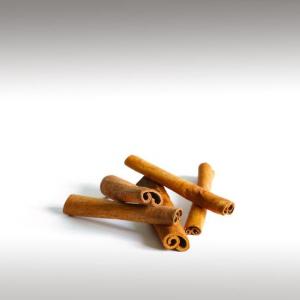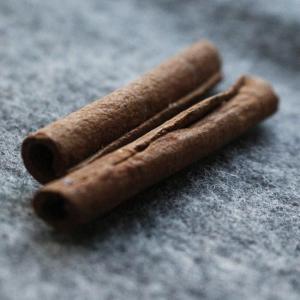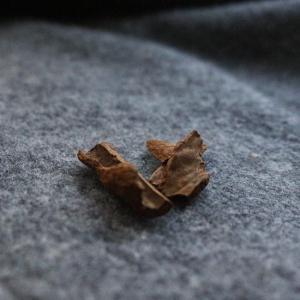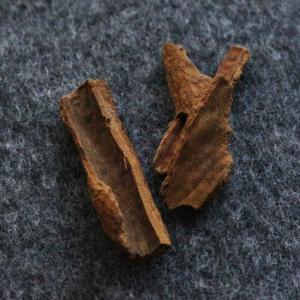
CHINESE CASSIA ESSENTIAL OIL (CINNAMOMUM CASSIA) - ESSENTIAL OILS

BASE / GENERAL DATA
Information submited: July 1, 2015 Modified: March 7, 2018 By: OperaDreamhouse
Botanical Name: Cinnamomum cassia
Common Method of Extraction: Steam distilled
Part Typically Used: Bark and leaf
Color: Light golden yellow to golden yellow
Consistency: Medium
Perfumery Note: Top
Strength of Initial Aroma: Warm pungent smell.
Cinnamomum cassia, called Chinese Cassia or Chinese Cinnamon, is an evergreen tree originating in southern China, and widely cultivated there and elsewhere in southern and eastern Asia (India, Indonesia, Laos, Malaysia, Taiwan, Thailand, and Vietnam).
The tree grows to 10-15 m tall, with greyish bark and hard, elongated leaves that are 10-15 cm long and have a decidedly reddish colour when young.
It is one of several species of Cinnamomum used primarily for their aromatic bark, which is used as a spice.
Chinese Cassia is a close relative to Ceylon Cinnamon (Cinnamomum Verum), Saigon Cinnamon (Cinnamomum Loureiroi, also known as "Vietnamese Cinnamon"), and Indonesian Cinnamon (Cinnamomum Burmannii). In all four species, the dried bark is used as a spice. Chinese Cassia's flavour is less delicate than that of Ceylon Cinnamon. Its bark is thicker, more difficult to crush, and has a rougher texture than that of Ceylon Cinnamon.
Evidently originating in China, now widely cultivated in tropical or subtropical areas of Fujian, Guangdong, Guangxi, Guizhou, Hainan, Taiwan, and Yunnan.
When the trees are six to eight years old, the bark is removed in long strips and left to dry in the hot sun. These strips roll up into tubes, the "quills" familiar as the culinary spice. An inner corky layer is stripped for Cinnamon, but is left in place with Cassia, which is redder in colour, often chipped, and more coarsely pungent than Cinnamon. To give the bark time to grow again, it is removed about every two years, and it is said that a good tree can produce for almost 200 years.
The dried bark is the source of the important spice Cassia. The immature fruits are a source of Cassia buds. An essential oil, called oil of Cassia or oil of Cinnamon, is obtained by steam distillation of the leaves, twigs and bark. It is used as a flavoring agent.
The consistency of Cassia is thicker, and it is less subtle and aromatic the another Cinnamomum speaces.
Cinnamon was utilized extensively thousands of years ago and is still popular today. Enjoyed since ancient times, Cinnamon was mentioned in ancient Egyptian texts, the Bible, and was widely traded thousands of years ago in Europe and in Asia by Arab spice traders.
Cinnamomum appears in recorded history dating back to at least 1,700 years B.C.E where it was a component of embalming fluid in ancient Egypt.
The spice is mentioned in the Bible under the name of "Quesiah". In Exodus, God told Moses to take Myrrh, Cinnamon, Olive oil and bulrushes with him from Egypt. The Ancient Egyptians were known to have used it to keep epidemics at bay, and in embalming.
Chemical structure:
The principal constituents: Cinnamon - cinnamic aldehyde (60-65%), caryophyllene, cymene, eugenol, linalool, methylamine ketone which gives the characteristic aroma, phellandrene, pineneand many others. Cassia contains a higher proportion of cinnamic aldehyde, as much as 80 - 85%.
Common Method of Extraction: Steam distilled
Part Typically Used: Bark and leaf
Color: Light golden yellow to golden yellow
Consistency: Medium
Perfumery Note: Top
Strength of Initial Aroma: Warm pungent smell.
Cinnamomum cassia, called Chinese Cassia or Chinese Cinnamon, is an evergreen tree originating in southern China, and widely cultivated there and elsewhere in southern and eastern Asia (India, Indonesia, Laos, Malaysia, Taiwan, Thailand, and Vietnam).
The tree grows to 10-15 m tall, with greyish bark and hard, elongated leaves that are 10-15 cm long and have a decidedly reddish colour when young.
It is one of several species of Cinnamomum used primarily for their aromatic bark, which is used as a spice.
Chinese Cassia is a close relative to Ceylon Cinnamon (Cinnamomum Verum), Saigon Cinnamon (Cinnamomum Loureiroi, also known as "Vietnamese Cinnamon"), and Indonesian Cinnamon (Cinnamomum Burmannii). In all four species, the dried bark is used as a spice. Chinese Cassia's flavour is less delicate than that of Ceylon Cinnamon. Its bark is thicker, more difficult to crush, and has a rougher texture than that of Ceylon Cinnamon.
Evidently originating in China, now widely cultivated in tropical or subtropical areas of Fujian, Guangdong, Guangxi, Guizhou, Hainan, Taiwan, and Yunnan.
When the trees are six to eight years old, the bark is removed in long strips and left to dry in the hot sun. These strips roll up into tubes, the "quills" familiar as the culinary spice. An inner corky layer is stripped for Cinnamon, but is left in place with Cassia, which is redder in colour, often chipped, and more coarsely pungent than Cinnamon. To give the bark time to grow again, it is removed about every two years, and it is said that a good tree can produce for almost 200 years.
The dried bark is the source of the important spice Cassia. The immature fruits are a source of Cassia buds. An essential oil, called oil of Cassia or oil of Cinnamon, is obtained by steam distillation of the leaves, twigs and bark. It is used as a flavoring agent.
The consistency of Cassia is thicker, and it is less subtle and aromatic the another Cinnamomum speaces.
Cinnamon was utilized extensively thousands of years ago and is still popular today. Enjoyed since ancient times, Cinnamon was mentioned in ancient Egyptian texts, the Bible, and was widely traded thousands of years ago in Europe and in Asia by Arab spice traders.
Cinnamomum appears in recorded history dating back to at least 1,700 years B.C.E where it was a component of embalming fluid in ancient Egypt.
The spice is mentioned in the Bible under the name of "Quesiah". In Exodus, God told Moses to take Myrrh, Cinnamon, Olive oil and bulrushes with him from Egypt. The Ancient Egyptians were known to have used it to keep epidemics at bay, and in embalming.
Chemical structure:
The principal constituents: Cinnamon - cinnamic aldehyde (60-65%), caryophyllene, cymene, eugenol, linalool, methylamine ketone which gives the characteristic aroma, phellandrene, pineneand many others. Cassia contains a higher proportion of cinnamic aldehyde, as much as 80 - 85%.

SPIRITUAL PRACTISES DATA

MEDICINE / HEALTH DATA

BEAUTY / COSMETICS DATA

FOOD / COOKING DATA
COMMENTS
No comments.





